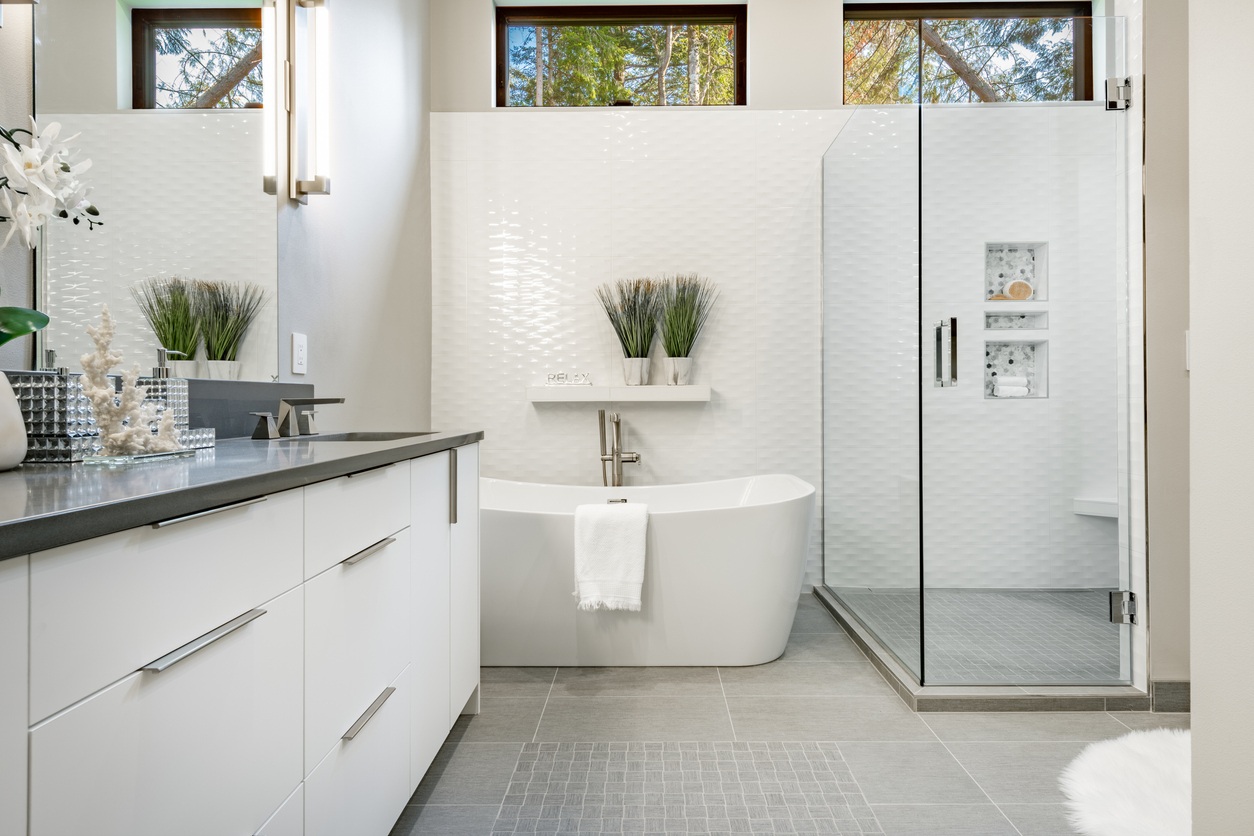
Bathroom Remodel Costs in Florida 2025 – What You Need to Know
Florida homeowners considering a bathroom remodel in 2025 face a unique mix of climate considerations, building codes and regional price
The right bathroom lights can not only illuminate but amplify your bathroom and create a more relaxing atmosphere. Today, we will show you how to make the most of your lighting and what you should expect from your bathroom’s lighting setup.
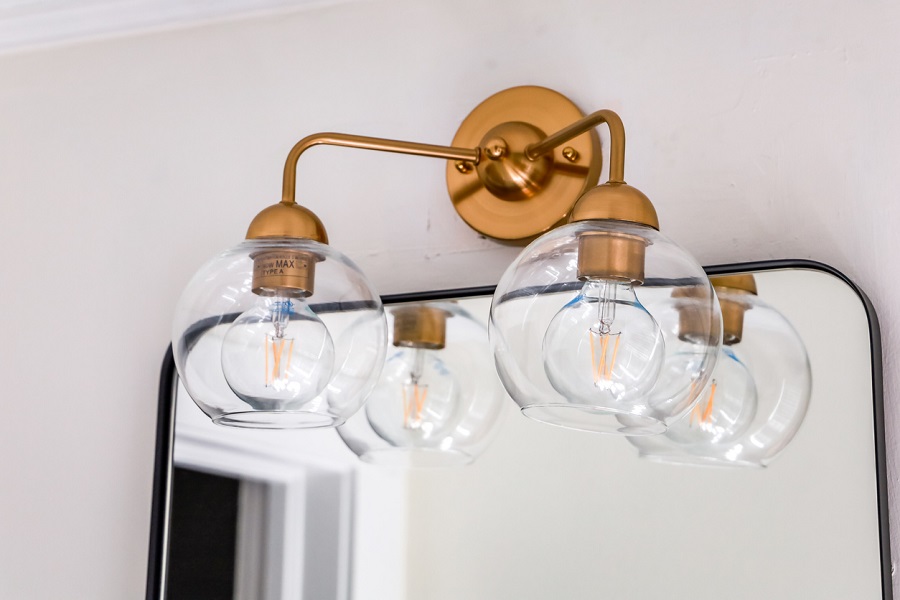
The goal of bathroom lighting is to create an efficient system that not only provides illumination but helps to reduce energy bills. With proper layering and intelligent use of the space, you can easily achieve both of these.
Great lighting can help amplify the features of your bathroom, making them focal points. In turn, this helps to elevate your bathroom’s theme and make it more attractive.
Good bathroom lighting helps to illuminate your bathroom, making it easier to navigate, especially at night. In addition, bathrooms can be slippery, and there are many fall dangers present, so having proper illumination helps to keep you safe.
Good bathroom lighting ensures high illumination, which amplifies the features of your bathroom, making it more inviting.
Proper lighting will make guests feel more welcome, increasing the resale value of your home as the space feels large and attractive.
Ambient lighting provides overall illumination and creates a uniform lighting level. The first layer is soft and often dimmable to adjust to day and night settings. Ambient lighting is common in orientation areas such as stairs and hallways and is essential in large rooms such as kitchens or home offices. Floor lamps, wall sconces, and ceiling-mounted fixtures are common examples of ambient lighting. However, ambient lighting is not recommended for task work or to showcase home elements.
Task lighting provides direct, intense illumination of an area and is highly suited for detailed work such as reading, writing, making up, and cooking. The benefit of task lighting is that it’s focused on a given area and is much brighter than ambient lighting. In addition, task lighting is glare-free and maintains a light level that prevents eyestrain.
Accent lighting is designed to highlight a specific object or area. The lighting strength is similar to ambient lights. It is meant to draw attention to a particular feature such as architecture, furnishings, or artwork, converting them into focal points in your bathroom. Recessed spot, track, and wall-mounted picture lights are all examples of accent lighting. The primary role of accent lighting is to create a point of interest for the viewer, so these lights are highly directional.
Light fixtures come in many types, offering different lighting styles:
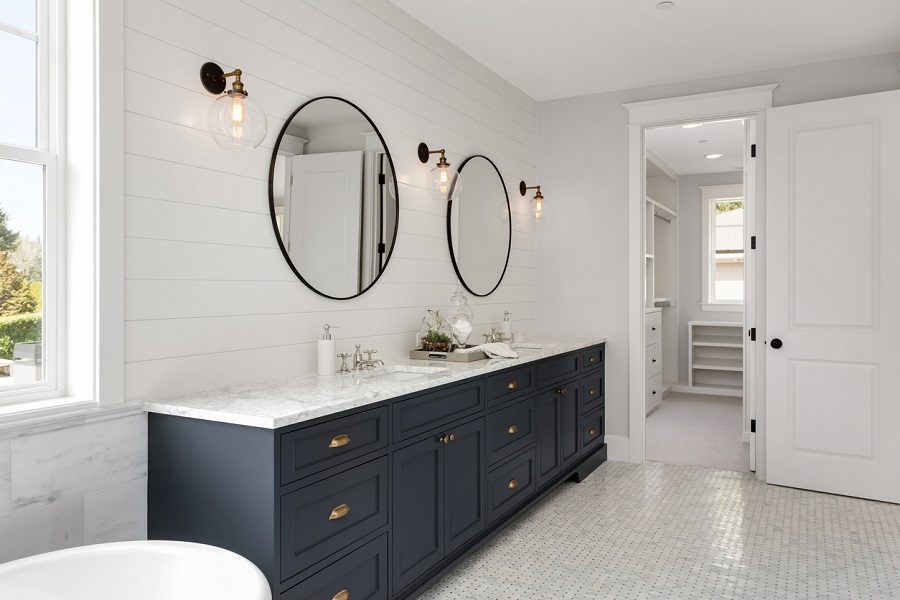
Vanity lights help to highlight the face for grooming and makeup application. In addition, these lights eliminate shadows and throw a balanced light tone on the face that reduces glare.
Ceiling lights provide general ambient lighting. In addition, many ceiling lights are tuned to give your bathroom a “warmer” ambiance.
Pendant lights are fixtures that drop from the ceiling and can provide both task lighting or ambient light depending on it’s orientation. Pendant lighting is unique in that the design is highly varied, giving you a large room for customization.
Wall sconces are decorative ambient lighting that is mounted flush to a wall.
Shower lights are installed in the vicinity of the shower to help illuminate the specific area with ambient lighting. The lighting is generally soft to create a more comfortable bathing experience.
LED lighting provides an efficient and versatile directional light source that lasts much longer than incandescent and fluorescent.
Toilet lights are functional lights that help to illuminate the toilet area when it’s in use.
Chandeliers are fixtures that also provide ambient light. Chandeliers are decorative elements, so their design is usually ornate and vibrant to evoke a sense of luxury.
Light quality describes the intensity and brightness of the light in a room. Hotter temperatures are referred to as “cool” light, which is ideal for active uses such as task lighting, workspaces, desks, offices, and hospitals. Colder temperatures are referred to as “warm” light, making it ideal for ambient and decorative lighting.
For your bathroom, you want a color temperature around 2-3000k which would be a warm color, making it ideal for relaxation. For this reason, both LEDs and dimmer switches are recommended to help keep the room in a “soft white” range of 2700-3000k.
When selecting your lights, remember that bathrooms are tight spaces, so you want double check all your measurements and space appropriately. For example, chandeliers may look nice, but if you’re in a half-bath, it makes little sense to install them as they will take up the majority of the bathroom. For this reason, recessed and wall-mounted lights are great choices for a bathroom as they do not conflict with the existing space.
A light’s moisture rating refers to its ability to withstand moisture environments, specifically condensation. These lights have a seal that prevents excess moisture from entering the light fixture, but achieving a high moisture rating can be difficult and expensive. That is why we recommend using proper ventilation such as a fan or window to deal with condensation.
Dimmer switches allow greater control over the brightness and intensity of your lights. Consider installing one, as in addition to having more control, a dimmer switch will make your bulbs last significantly longer.
Regardless of what light setup you are looking for, always prioritize safety. Make sure your setup conforms to all safety standards, and be mindful of all your electrical connections. Also, since you are installing lights in a bathroom, moisture will be involved, which can increase the chance of danger, so it’s important to be cautious.
LEDs offer a more efficient and safer light alternative. They have a heavy initial cost, but LEDs will last significantly longer in the long run, so the price balances out.
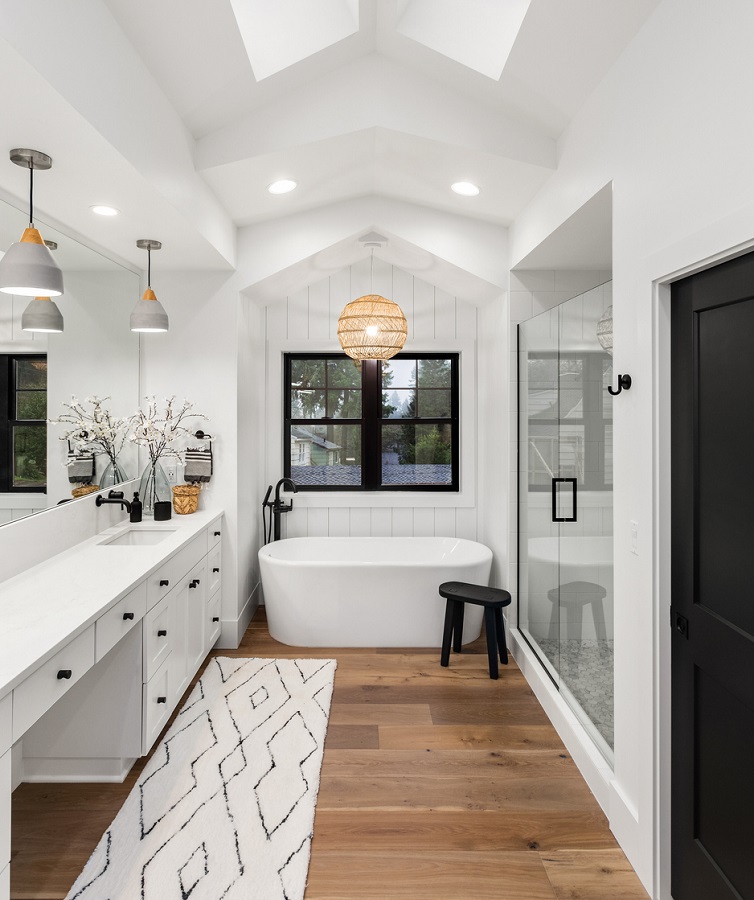
No, you do not need specific lighting for your bathroom. Which lights you use are up to you and your preference, as long as they satisfy your needs.
Although it may seem challenging, lighting a bathroom is the same, regardless if it’s small or large. First, you need to measure the space and divide it into individually lit sections. This method allows you to layer light differently and understand how much light you need or don’t need in the space.
Bathroom lighting can greatly transform a small bathroom into a spacious retreat. Don’t be afraid to experiment with various light sources to see which one fits your home. Then, when you are ready to shop, you can find a wide selection of lights in retail stores and online vendors.

Eric is the founder and president of Badeloft USA. He has been the president of Badeloft’s US division for over ten years and oversees all marketing and branding aspects of Badeloftusa.com.
His expertise lies in small business development, sales, and home and bathroom industry trends and information.
Contact us with any business related inquiries.
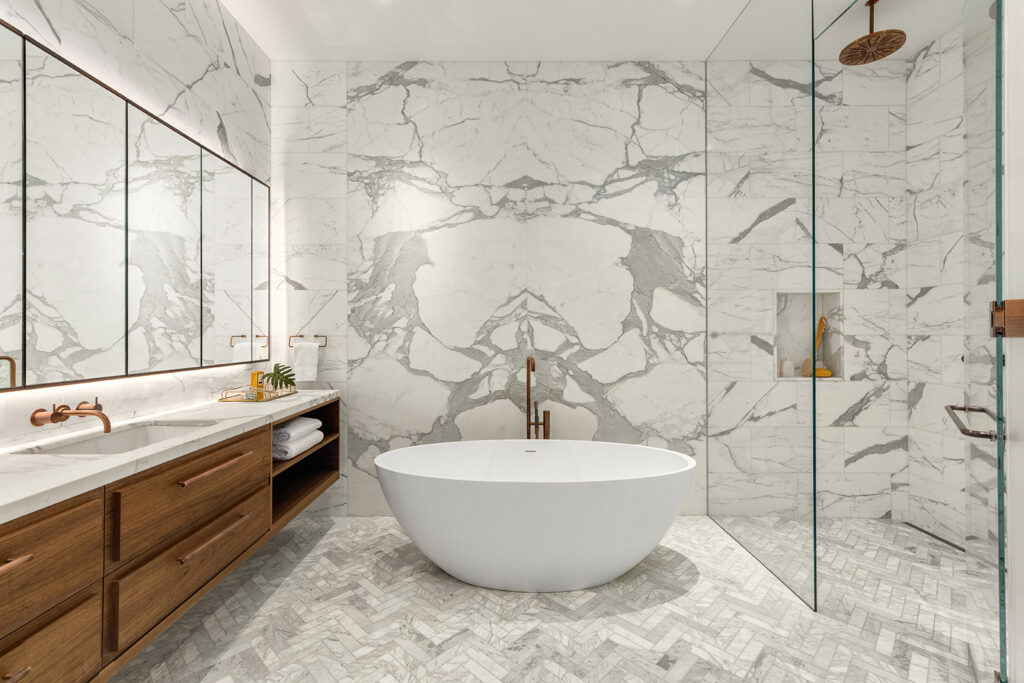
Free material samples and tub templates

Florida homeowners considering a bathroom remodel in 2025 face a unique mix of climate considerations, building codes and regional price
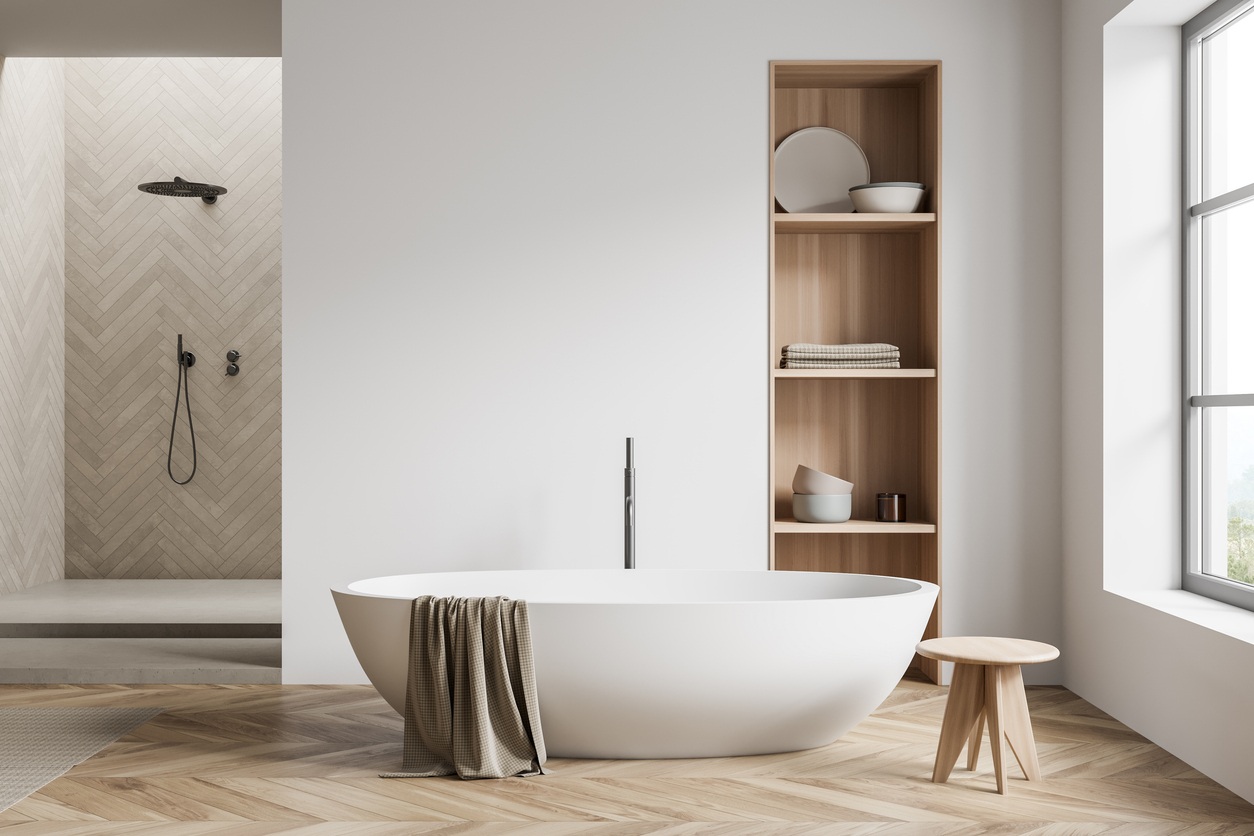
Remodeling a bathroom in New York can transform an outdated space into a modern retreat while adding value to your
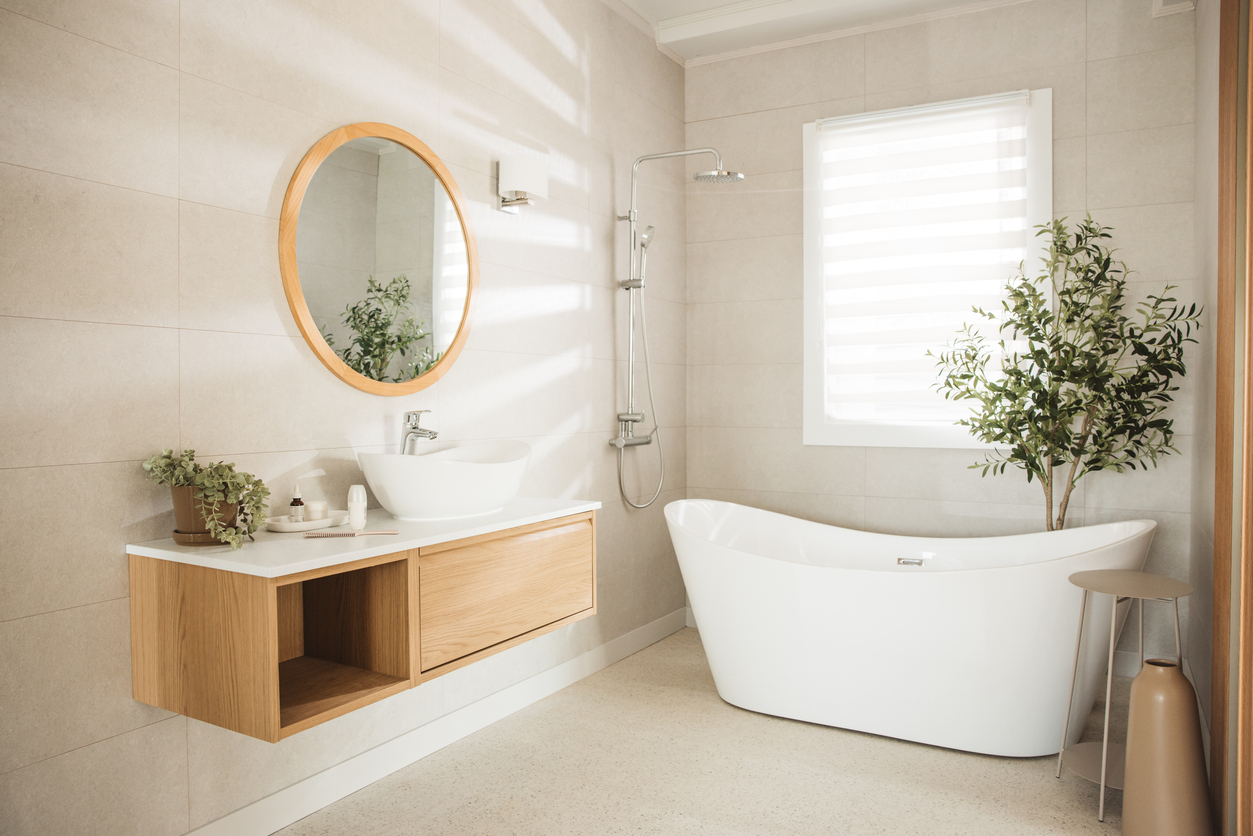
Bathroom remodel costs in California continue to rise in 2025 due to elevated labor rates, increased material demand, and strict
Bathroom remodel costs in Texas are influenced by the state’s vast geography, diverse housing stock and relatively lower labor rates
"*" indicates required fields
"*" indicates required fields
Request your free material sample below. By submitting, you agree to receive occasional product updates and offers from Badeloft. Unsubscribe anytime.
"*" indicates required fields